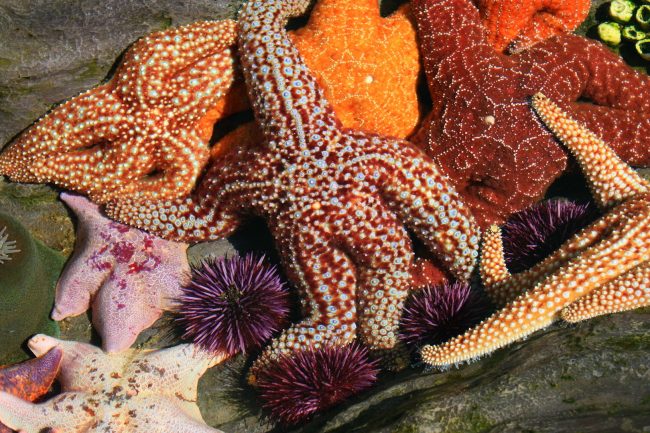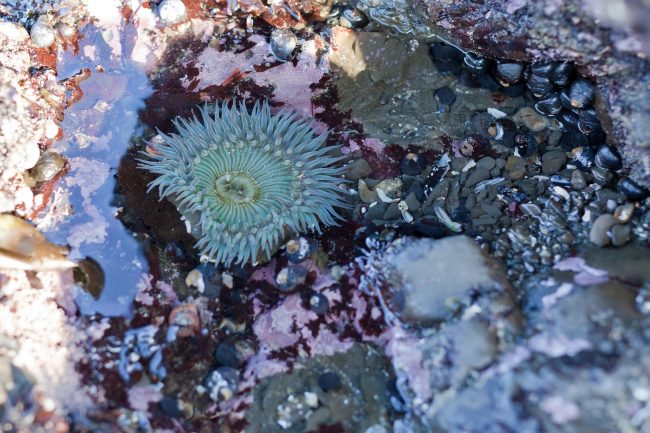Tide Pool Zones and Species of California

Related: See the Best Tide Pools in California
Tide pools are one of nature’s perfect inventions. They are found in the area between the high tide line and the low tide (and just below low tide). In this area where the tides rise and fall due to the gravitational pull of the sun and moon there are several zones where different marine animals live. These unique zones of the ocean are sometimes under water and sometimes not. The animals set up their homes or attach to rocks in places that suit their needs of being wet most of the time or just some of the time. In the lowest zone, the animals are wet all of the time, but we can still see them!
Anyone can feel like an amateur microbiologist when investigating tide pools during low tides. We just need to be careful like microbiologists are. They can spot the living creatures better than we can. The rest of us need to be aware and tread carefully. Some things that look like rocks are actually alive. Take lots of pictures, but leave everything else.

Three zones that make up the tide pool areas of California
- The splash zone is higher on the rocks and is exposed at all but the highest tides. Here you’ll find things like periwinkle snails, shore crabs, fingered limpets, chitons, and acorn barnacles.
- The middle intertidal zone is under water at high tide and exposed at low tide. This is where most people go tidepooling when walking around on rocks at low tide. In this zone you can sea anemones, hermit crabs, snails, sea hares, sea stars, sea sacs, lobsters, chitons, limpets, California mussels, and small fish.
- The subtidal zone is the lowest zone and it is below the reefs that get exposed at low tides. This zone can still be seen at low tide but you’ll be looking at it in the water. Larger fish swim around near shore in this zone as do red octopus. Urchins, anemone, red abalone, and larger sea stars cling to the rocks that stay submerged almost all of the time.
See our list of the Best Tidepooling Beaches in California and check tide charts before heading out. Low tide is typically the only time that is safe to see the good stuff.
